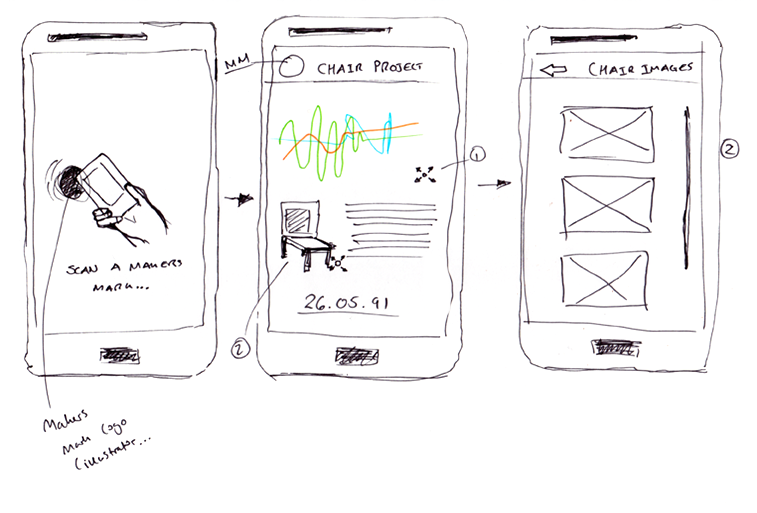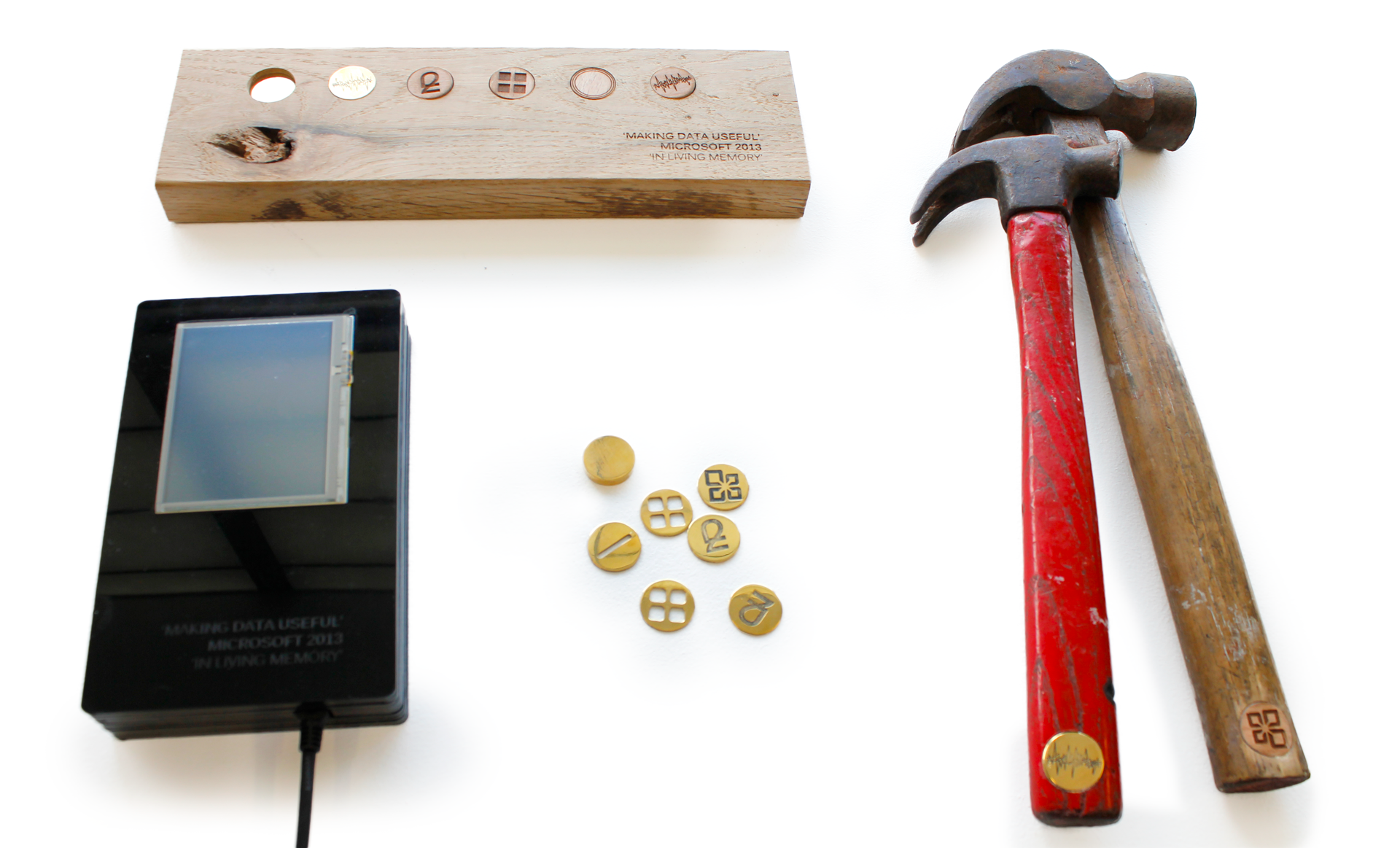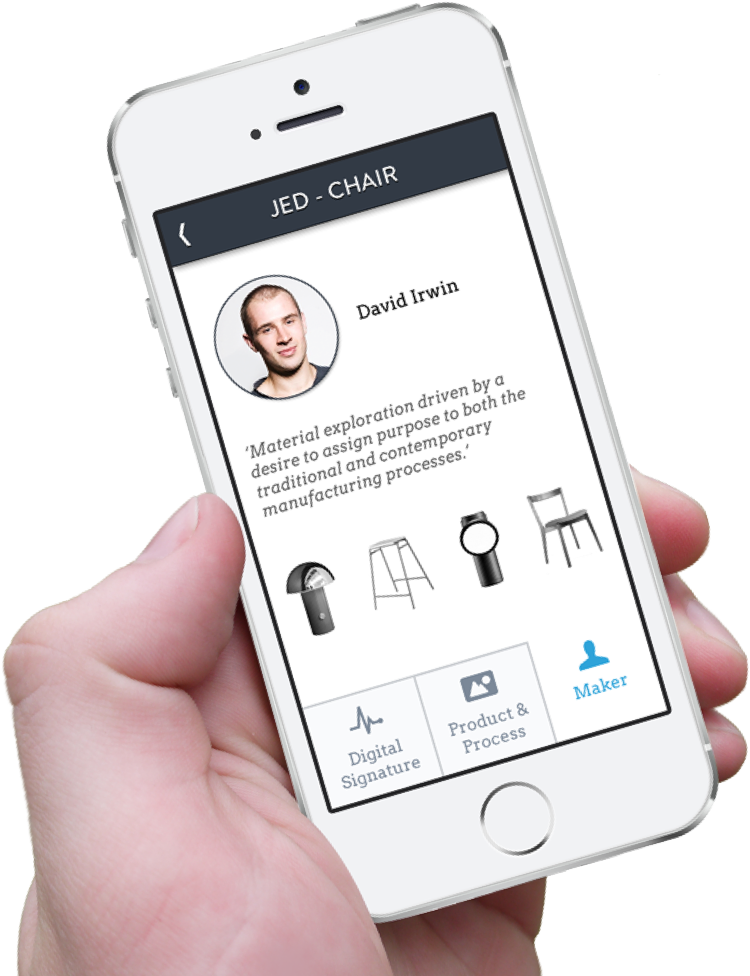
Concept Sketching
Through sketching, I explored how users would retrieve this data on their phones and my partner explored how sensors might be physically manifested in the objects that the maker’s would create. The solution was that users could scan an RFID tag and receive data through the cloud to their phone. This would be data such as an item’s digital signature, repair tutorials and information on similar objects from the same maker.


